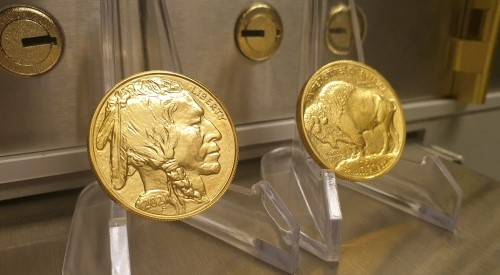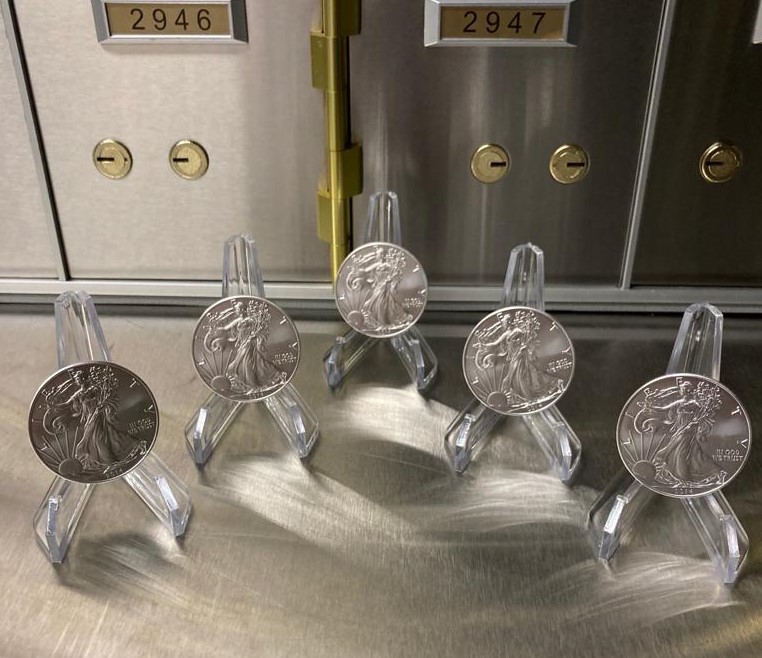
The American Buffalo: Gold Coin Review
Introduction:
The American Buffalo coin is a popular gold coin that holds a great deal of significance in the U.S. This brief analysis looks at the history of the coin, along with an exploration on the inspiration behind the design and the cultural impact that it has on American numismatics.
History:
One of the primary reasons that the American Buffalo was introduced was to rival other pure gold coins that were in circulation at the time. The Eagle, a 22-karat gold coin, has been in circulation since 1986. However, the Buffalo was the first 24-karat gold coin released by the U.S. Mint, making it extremely attractive to investors at the time. The gold coin is classed as legal tender, with a face value of $50, although the metal value of the coin is far greater than this. Prior to the production of the American Buffalo, the U.S. Mint announced that there would be a mintage limit of 300,000 coins.
Design:
The U.S. Mint introduced the American Buffalo coin in 2006, and it became the first 24-karat gold coin struck by the mint. The coin contains 1 ounce of pure gold, weighing 31.1 grams. The intricate design of the coin mirrors the design of the Indian Head/Buffalo Nickel, which was a copper-nickel 5 cent piece in circulation from 1913 to 1938. James Earl Fraser, the sculptor responsible for the design, took inspiration from Native American and wildlife imagery, which were both very prominent in the West during the early 20th century.
The obverse side of the coin displays a picture combining three Native American Chiefs – namely: Two Moons, Iron Tail, and Big Tree. The image is meant to capture the strength and resilience of the Native American culture, which the great chiefs symbolise.
The reverse of the coin contains an image of an American Bison, commonly referred to as a buffalo, which is based on ‘Black Diamond’ – a bison that was present in the New York Zoo at the time of James Earl Fraser’s design. The Buffalo is a symbol of unity and resilience in the U.S. while also symbolising the American frontier. It can be characterised as a representation of the vitality of the nation’s natural landscapes.

(Copper-Nickel 5-Cent Piece)
Cultural Impact:
The appealing design of the Buffalo coin caused it to gain traction among investors and collectors alike. The design, along with the historical significance, and gold content of the coin, make it a popular investment. One certain impact this coin has had since inception is the role it played in raising awareness about the Native American culture and the importance of preserving the natural heritage of the United States of America. The design of the coin is a constant reminder of the historical connection that is apparent between the Native Americans, the wildlife, and the land.
Pricing:
The American Buffalo typically commands a higher premium than most coins due to the aesthetically appealing nature of the coin and the fact that it is produced by the U.S. mint. The supply limit of 300,000 is another factor that contributes to the higher price. Although the coin has a face value of $50, it is predominantly purchased for the value of the gold within the coin.
Conclusion:
The American Buffalo coin stands as a testament to the rich history and cultural diversity of the U.S. The design of the coin, which pays homage to Native American and Western imagery, signifies the spirit of the American frontier. The coin remains a favourite among U.S. investors because of the historical and cultural significance that is held within. Demand for the coin has been huge since it was introduced in 2006, solidifying the coin’s place as one of the most valuable and sought after gold pieces in the world.
If you are interested in an investment into gold coins, then you can contact Merrion Gold’s trading desk using the following number: 01-254-7901. We are available Monday-Friday from 8:45am-6pm. You can also email all your gold enquiries to [email protected].

